Three exhibitions currently enrich the exhibition offerings of the MAMCO - Musée d’art moderne et contemporain in Geneva, a museum that has chosen to adopt a particular museum policy in that it changes its displays three times a year. MAMCO is in fact spread over four floors, but only a few spaces are permanent. Since its opening in 1994, the Geneva Museum of Modern and Contemporary Art has offered its visitors as many as 450 exhibitions with works from the early 1960s to the present.
On view until November 8, 2020 are the exhibitions Collection Yoon-ja & Paul Devautour (from March 19, 2020) and Christian Marclay. To be continued, 2016 (through August 31, 2020). The former is dedicated to the collection of Yoon-Ja Choi and Paul Devautour. In 1985 the two decided to stop making works bearing their signature to become “art practitioners” and promote artists they themselves represented, devoting much of their time to growing and administering their collection. As artists, they decided to turn their attention to identifying, collecting and exhibiting works of art. The result was a kind of "meta-opera," part fiction and part reality, in which the new collectors could fulfill various strategic roles behind the scenes, being helpful to art historians, critics, curators and agents. Among the artists in their collection, there were names that sounded strange, such as Richard Allibert, Buchal & Clavel, J. Duplo, Kit Rangeta and Lady Penelope; and others much more plausible, such as Ramo Nash Circle, Manuel Ismora, Claude Lantier, Alexandre Lenoir, Martin Tupper and David Vincent. Still others had an international flavor-Art Keller, Richard Kongrosian, Vladimir Kutusov, Gladys Clover. But the truth is that none of these really existed: they were all alter egos of Yoon-Ja Choi and Paul Devautour. The pair managed to develop an artistic and critical landscape and present it in the marketplace. Some works made sense only in their exhibition context, others exhibited vacuous theories or deliberately marginal aesthetic issues in favor of exhibition strategies. The line between reality and fiction was so blurred and fuzzy that it was really difficult to understand where one ended and the other began. The artists and collectors are fictional, but the collection itself and the works that constitute it are real.
The works of the two fake collectors, which have been on display at MAMCO since 1994, were donated to the museum and became part of the permanent collection in 2019. It is a testament to how the art system functioned between 1985, when the couple met, and 2004, when they separated.
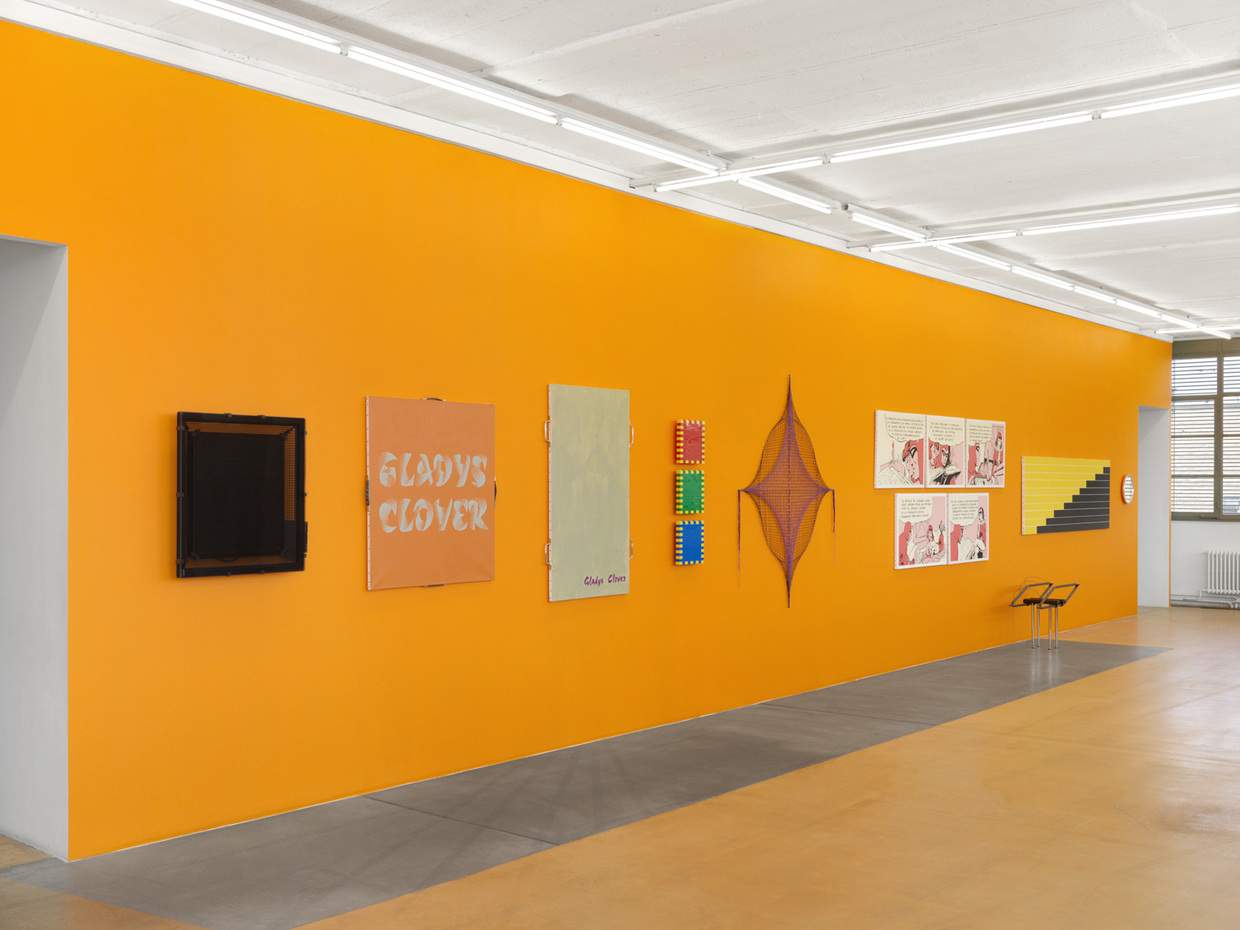 |
| The collection of Yoon-Ja Choi and Paul Devautour at MAMCO in Geneva. Ph. Annik Wetter |
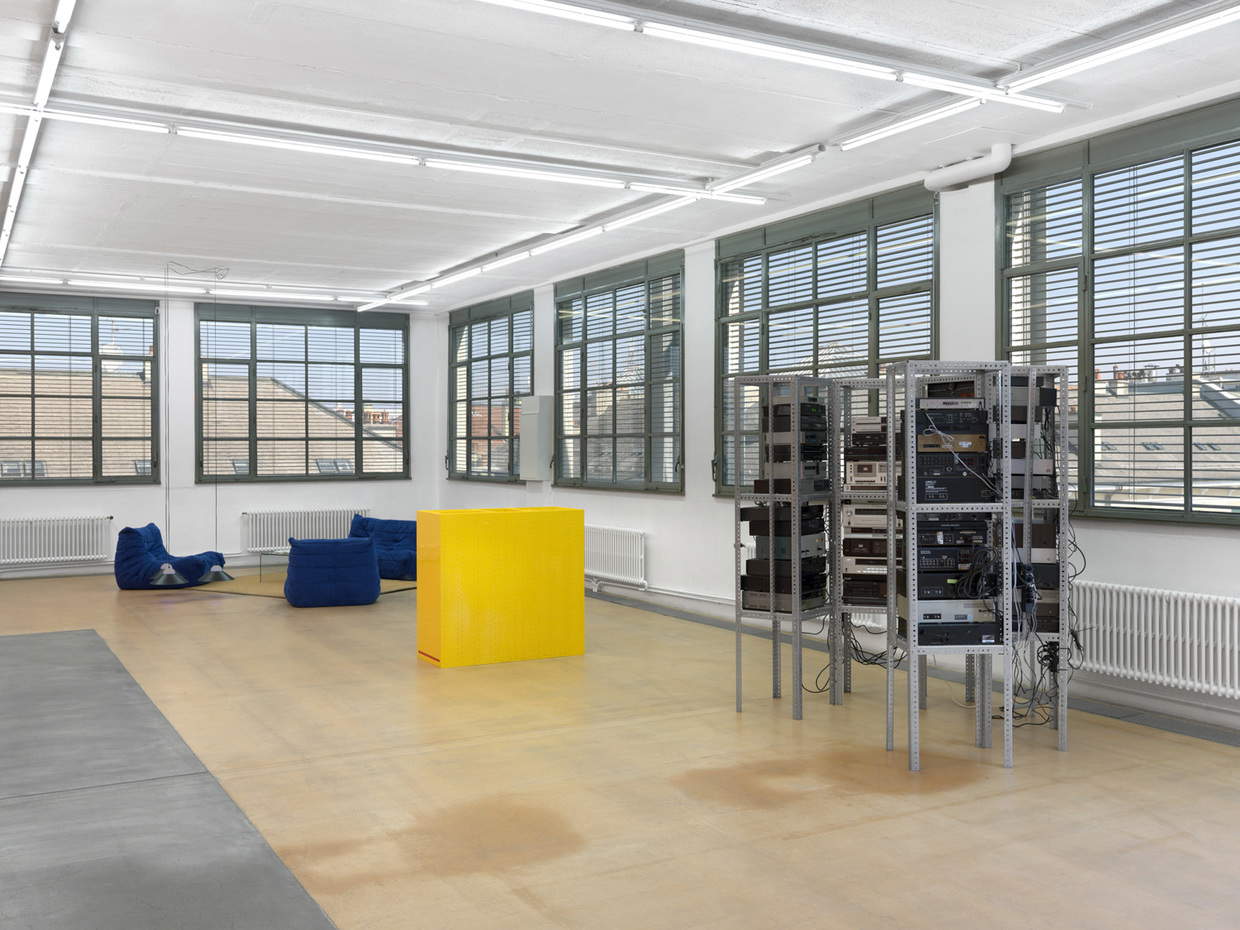 |
| Yoon-Ja Choi and Paul Devautour’s collection at MAMCO in Geneva. Ph. Annik Wetter |
To be continued, 2016 by Christian Marclay is organized by Françoise Ninghetto and is installed in MAMCO’s Drawings Cabinet. Christian Marclay (San Rafael, California, 1955) moved to New York in 1978 and soon became part of New York’s prolific cultural scene, in which music and visual arts are closely connected. Counterculture venues such as the kitchen provide opportunities for interdisciplinary events in which artists and musicians collaborate, in keeping with Marclay’s interest in using sound as a medium for visual art. “A lot of my art is about how an image is musically expressive and how sound is expressed visually,” the artist says. Throughout his career, Marclay has explored the relationship between sound and sight and the ways in which sound can be made visible. Although his art focuses on hearing, it is not necessarily only about music. Onomatopoeias, for example, are excellent tools in his art practice because they not only represent a sound but also imitate the sounds they denote. Marclay hunts for onomatopoeias in shop windows, street signs, advertisements, comic strips, and product labels. He often uses collage to combine a series of images into a long, evocative composition that can be used as a score by a singer. The artist first began using onomatopoeia in 1989, extrapolating pages from comic books and painting everything but the words that expressed sounds. In 2006 he began to strip pages from comic books and assemble the fragments into collages to create an evocative visual narrative.
An interest in comic books is a recurring theme in Marclay’s artistic output involving the visualization of sounds-a particularly relevant medium as he juxtaposes images to form narrative sequences with written interjections and onomatopoeias. The artist is a great lover of images, but he does not only collect comic books, but also photographs, album covers, and film clips. He does not want to simply accumulate them, but to combine them into a whole, making compositions of drawings, interjections, picture-words and eloquent fragments of text. The result is a rhythmic composition open to auditory interpretation.
To be Continued was born in 2016 and is a forty-eight-page comic book that is entertaining to the reader because of the expressiveness of its illustrations, which the artist has brought together and assembled into short vignettes. The preparatory collages displayed in the exhibition provide a glimpse of a work in progress, of how Marclay chooses images and arranges them into a composition. The book was created as a graphic score by the baBel ensemble, with whom Marclay has collaborated since 2012. The group of five musicians improvised based on the illustrations for a duration of thirty seconds per page, turning the book into a concert without interruption.
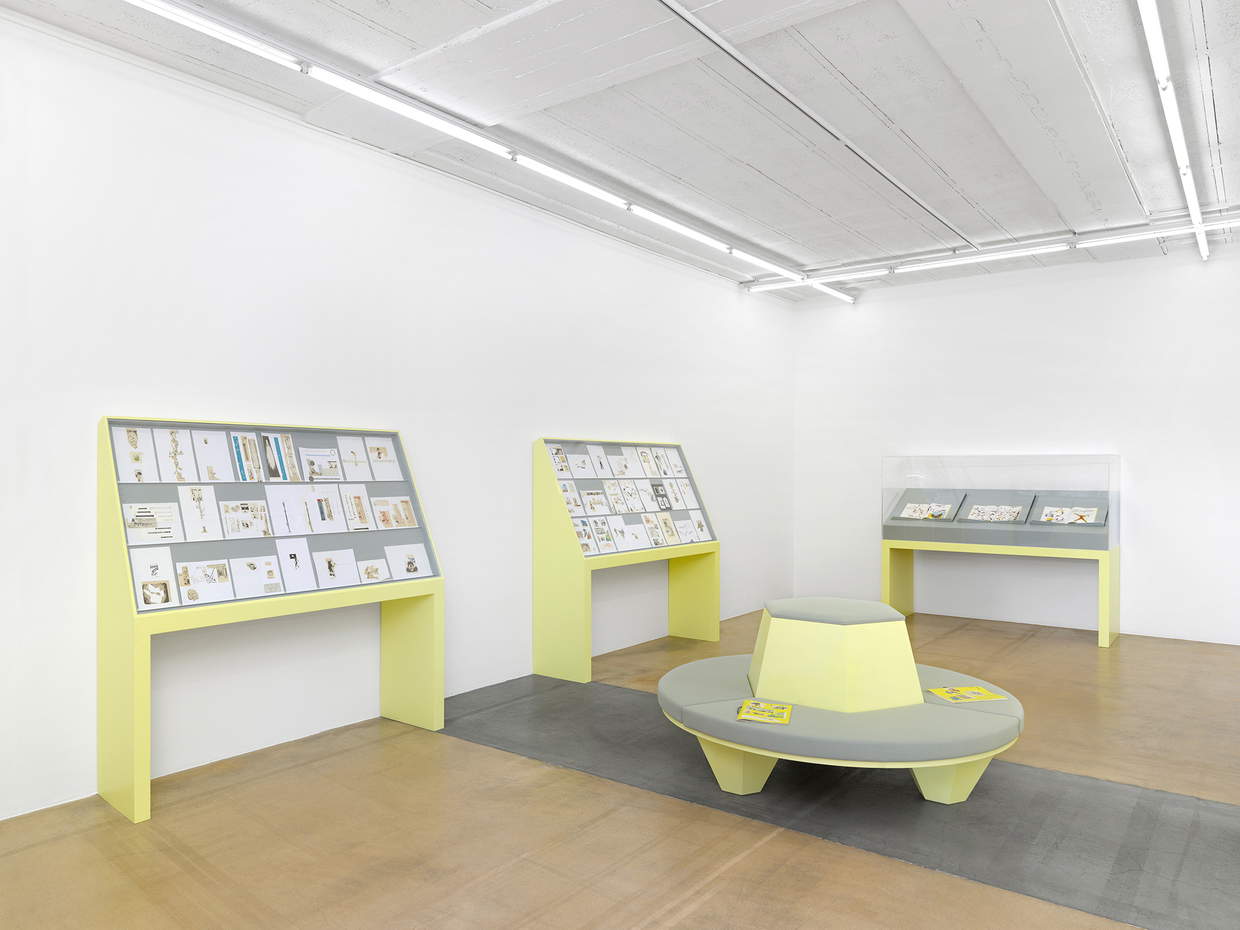 |
| To be continued exhibition by Christian Marclay |
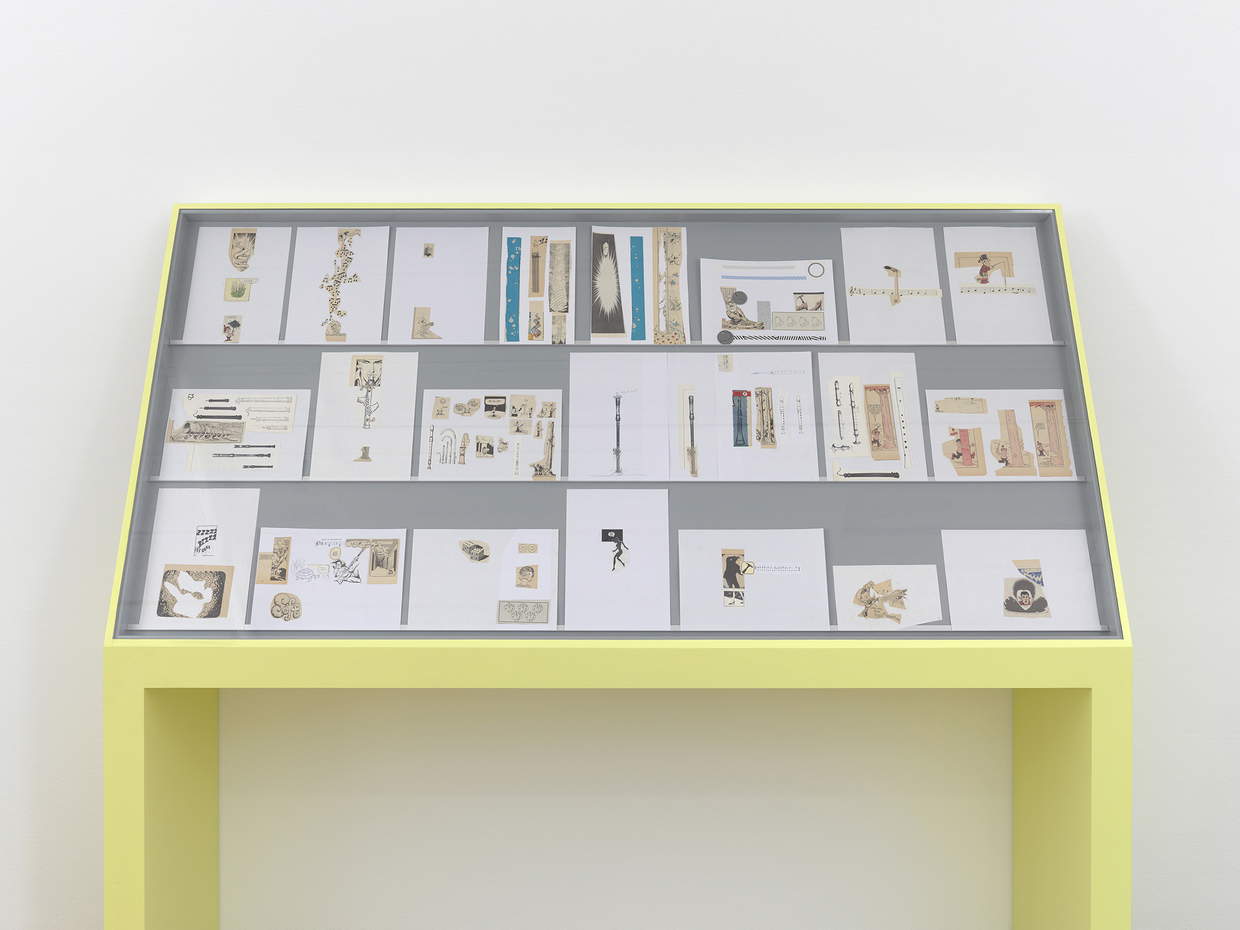 |
| To be continued exhibition by Christian Marclay |
On the other hand, the exhibition dedicated to Olivier Mosset, curated by Paul Bernard and Lionel Bovier, with the support of the Fondation du Jubilé de la Mobilière Suisse Société Coopérative, Fondation de bienfaisance du groupe Pictet , Fondation Bonhôte pour l’art contemporain and Brownstone Foundation, is open until December 6, 2020.
Olivier Mosset (Bern, 1944) is one of the leading exponents of postwar abstract painting and a fundamental reference for entire generations of European and American painters. Together with Daniel Buren, Michel Parmentier and Niele Toroni, he was a member of the BMPT group that opposed the established pictorial tradition. Freed from traditional models, the group members intended to give painting a new beginning through scratches, and each used his own personal motif: Buren vertical stripes, Parmentier horizontal stripes, Mosset circles, Toroni brush traces.
The extended series of circles then became distinctive in Mosset’s painting in the late 1960s and early 1970s. The artist has always been devoted to the abstract and its history: as critic Bob Nickas notes, “his approach considers painting in terms of production and reception, and the recognition is its social and political dimensions.” He moved to the United States in 1977 and became part of the vibrant New York art scene of the 1980s. His later paintings explore monochromatic and geometric abstraction, including the analytical rigor of his early works. Mosset emerges as one of the few European painters who placed himself within the American tradition of large-scale painting (the legacy of Frank Stella, Robert Ryman, or Barner Newman), but who remained attentive to developments in art, even supporting artists whose practices differed from his own.
Occupying virtually the entire museum, MAMCO’s retrospective traces his nearly sixty-year career, from his early experiments in the 1960s to his recent monumental works. At the same time, several rooms are devoted to the movements and artists with whom Mosset was or remained closely associated, allowing visitors to understand his art and contextualize it. In addition, a section is devoted to activities conducted with Buren, Parmentier and Toroni. The exhibition then presents works by the Nouveaux Réalistes (particularly Jean Tinguely and Daniel Spoerri, for whom Mosset worked as an assistant), the experimental filmmaking collective Zanzibar, with whom Mosset directed, acted and produced a number of films, the American Radical Painting group of the 1970s and 1980s (which included Marcia Hafif and Joseph Marioni), and artists such as Sherrie Levine, Steven Parrino, Cady Noland, John Armleder and Sylvie Fleury, with whom he maintained a regular dialogue.
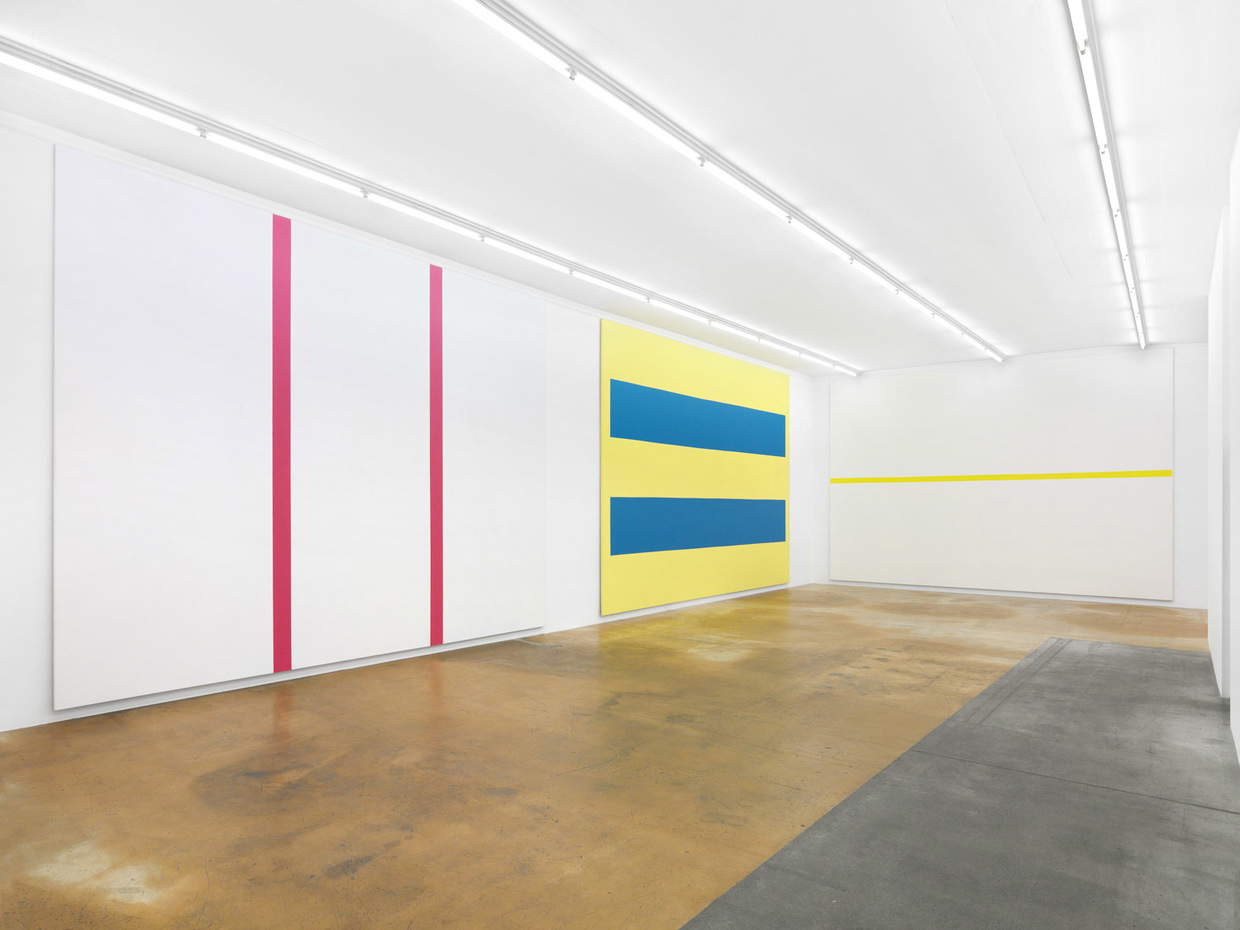 |
| The exhibition dedicated to Olivier Mosset. Ph. Annik Wetter |
Permanent exhibition, on the other hand, is the sound installation by Kristin Oppenheim (Honolulu, 1959). The audience enters the environment of the installation consisting of seven musical sequences and finds itself in the heart of a song. An a cappella voice preserves the essence of the original song: a short melody and one or two phrases. The artist invokes individual and collective memory by presenting a familiar song that plays on repeat. One voice approaches, while a second, more distant one overlaps the first, spreading throughout the space; listening is affected by the way the sound is inscribed in space. The work brings primitive sensations to the surface through vocal vibrations, the back and forth shifts between the two voices, and the rhythm, similar to that of breathing. The body becomes a screen onto which the voices are projected: it is a permeable and receptive organism that allows us to rediscover the tactile properties of sound. And in contrast to this conscious physicality, we notice a kind of evanescence in the work, the absence of a body that projects this simple, unadorned song into an empty space. Oppenheim’s use of text also evokes a sense of lack, inadequacy, and distance from others. In Kristin Oppenheim’s work, voices take the place of figures, as if they accompany visitors. Singing allows a considerable amount of emotion to be brought into play, and melody encourages the use of multiple vocal tones. Finally, tone and repetition are intended to reveal other voices.
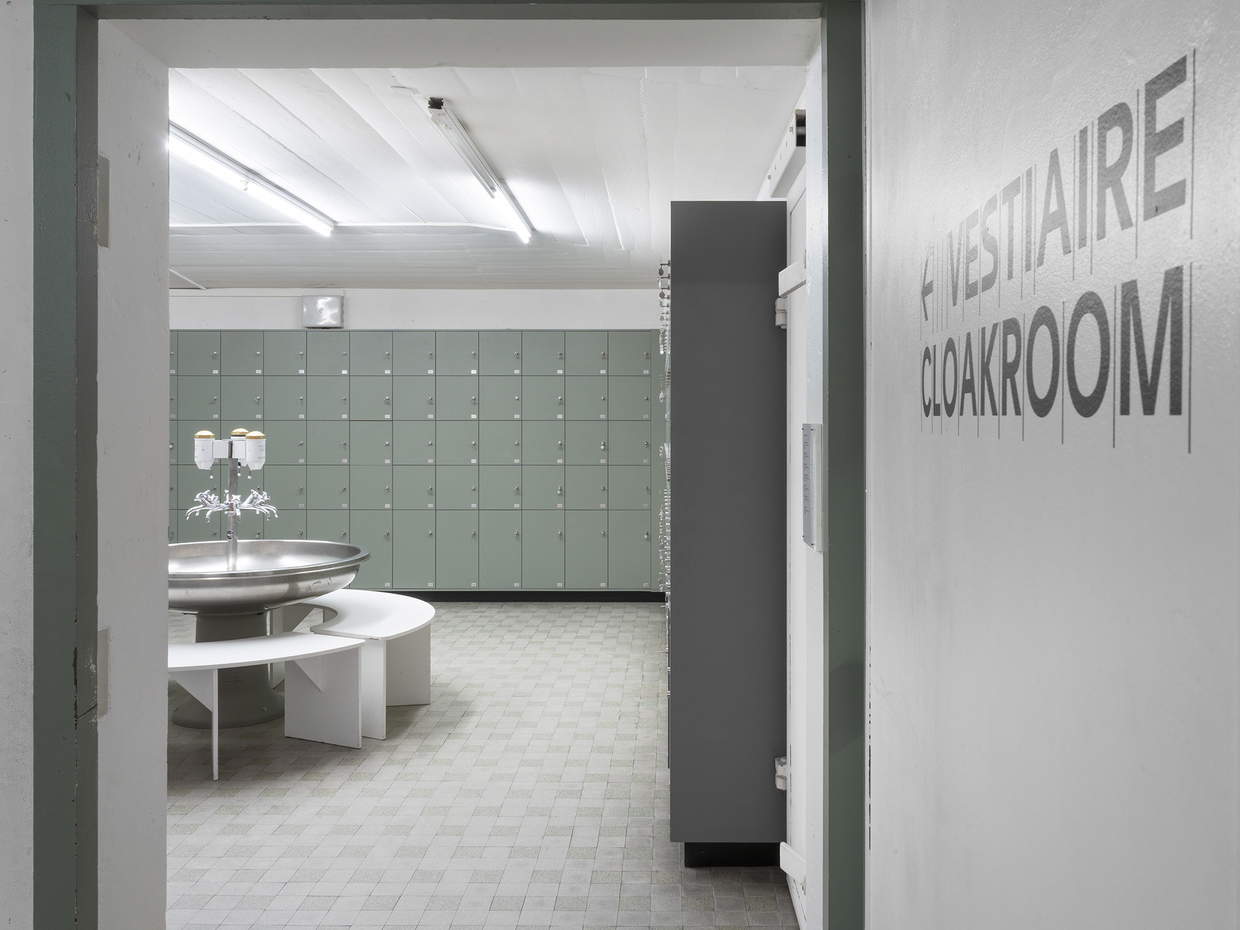 |
| Kristin Oppenheim’s installation. Ph. Annik Wetter |
Located on the third floor of MAMCO, the Apartment is unusual exhibition space. It is a reconstruction of the Parisian apartment where Ghislain Mollet-Viéville worked from 1975 to 1991 to promote minimalist and conceptual art. Calling himself an “art agent,” Mollet-Viéville initially organized his living and working space to make it suitable for the protocols of the works in his collection, before prioritizing the consequences of their dematerialization and moving to a new apartment without visible works. This means that his collection may have been entrusted to MAMCO when the museum opened in 1994. In 2016, the museum began to acquire much of it.
The twenty-five works in the collection are significant of the output of the first generation of minimalist artists, such as Carl Andre, Donald Judd, and John McCracken, and conceptual artists, such as Joseph Kosuth, Sol LeWitt, and Lawrence Weiner. If the former explore a lexicon of elemental, logical, and radical forms that steer clear of all anthropomorphism and narrative features, the latter offer primarily protocols for execution, turning the collector into an agent on whom the material existence of the works depends. Both put forward proposals in favor of an immediate intellectual and sensory experience.
 |
| MAMCO, The Apartment. Ph. Annik Wetter |
 |
| MAMCO, the apartment. Ph. Annik Wetter |
Unlike MAMCO’s other spaces, the Apartment presents the works in a “domestic” setting: this means for visitors to have the feeling of being in a more intimate space, in a space where the public is invited to set aside conventions while participating in a lecture, a special event, or simply while lingering in front of the works.
MAMCO’s collection has more than five thousand works created between the second half of the 20th century and the early 2000s, and half of them have been available online since the summer of 2020, but digitization is constantly being updated. The online catalog of the museum’s collection is made possible thanks to the support of Fondation Leenaards, Loterie Romande, and Fondation Lombard Odier.
More information can be found at mamco.ch
 |
| A museum in constant change: the MAMCO in Geneva |
Warning: the translation into English of the original Italian article was created using automatic tools. We undertake to review all articles, but we do not guarantee the total absence of inaccuracies in the translation due to the program. You can find the original by clicking on the ITA button. If you find any mistake,please contact us.